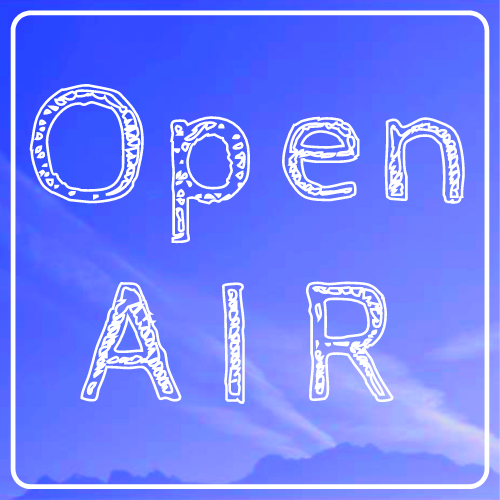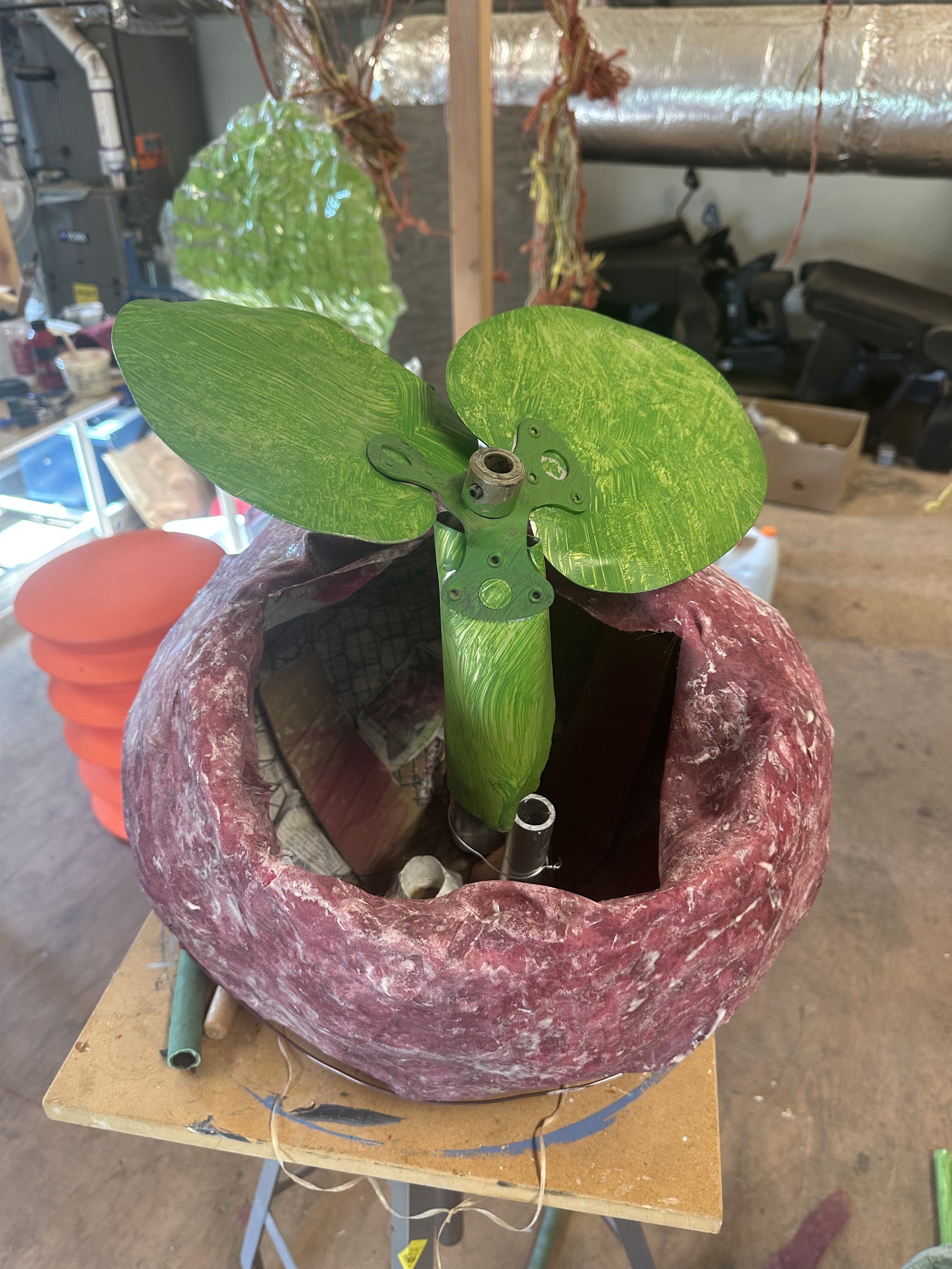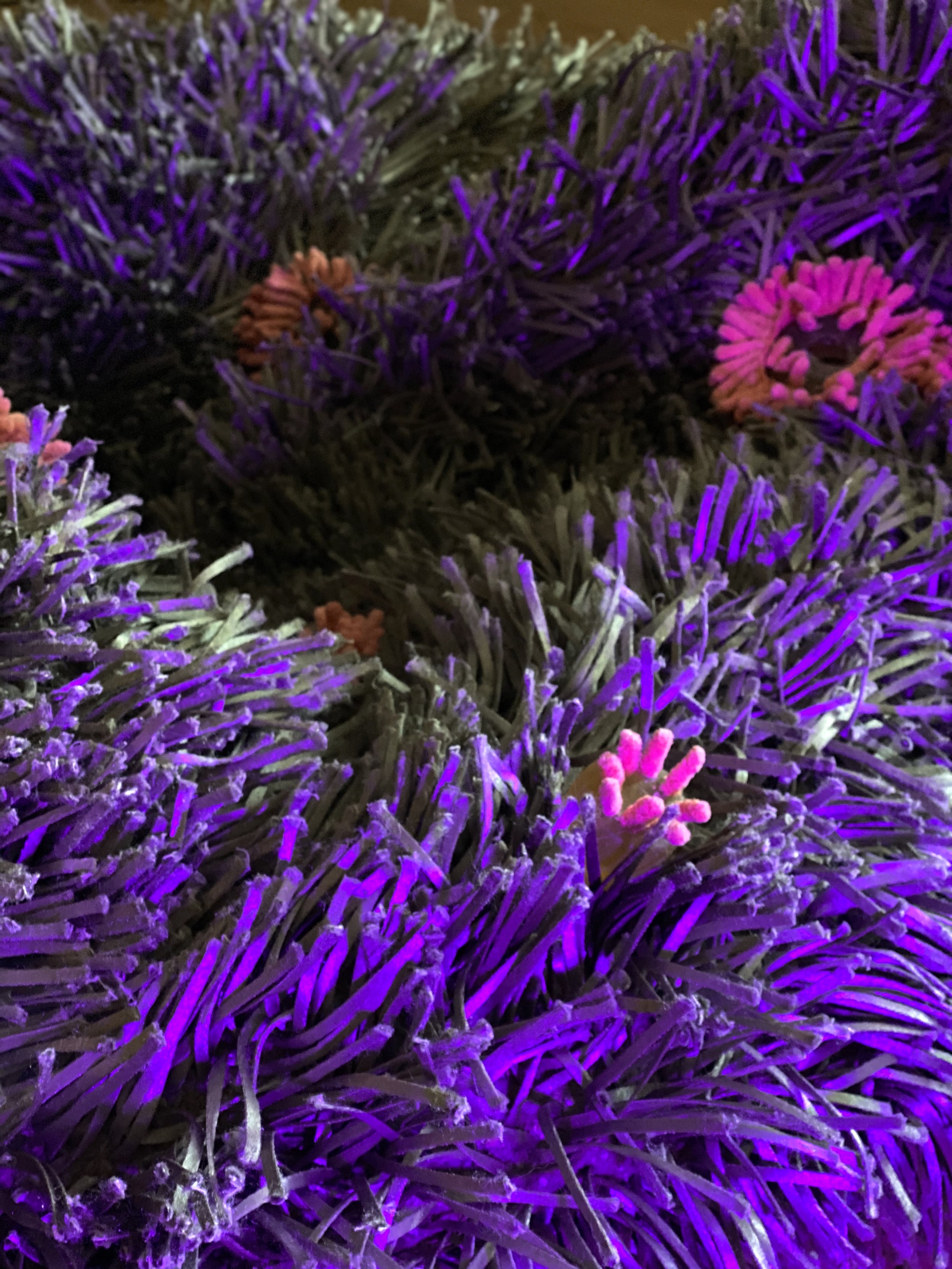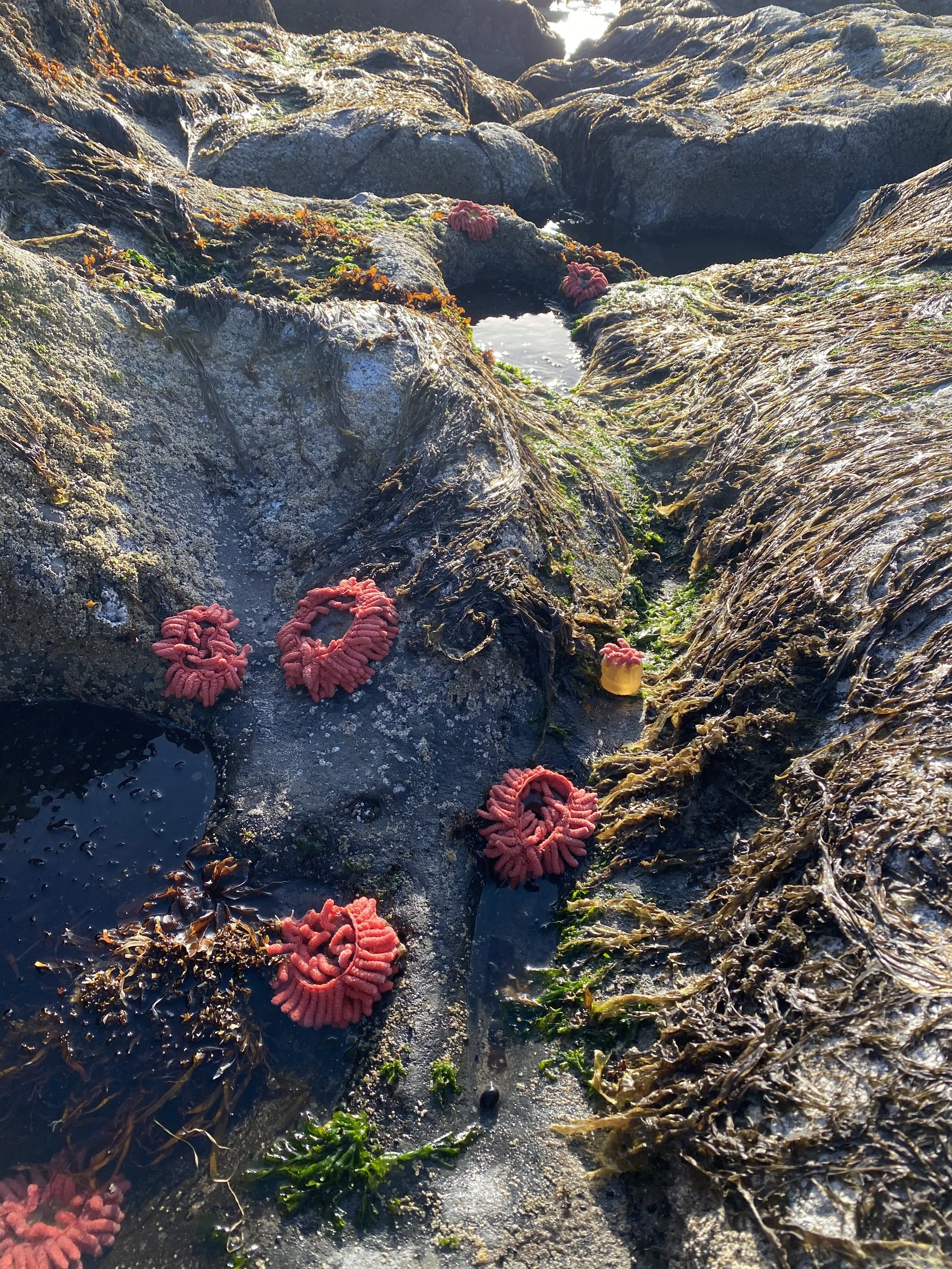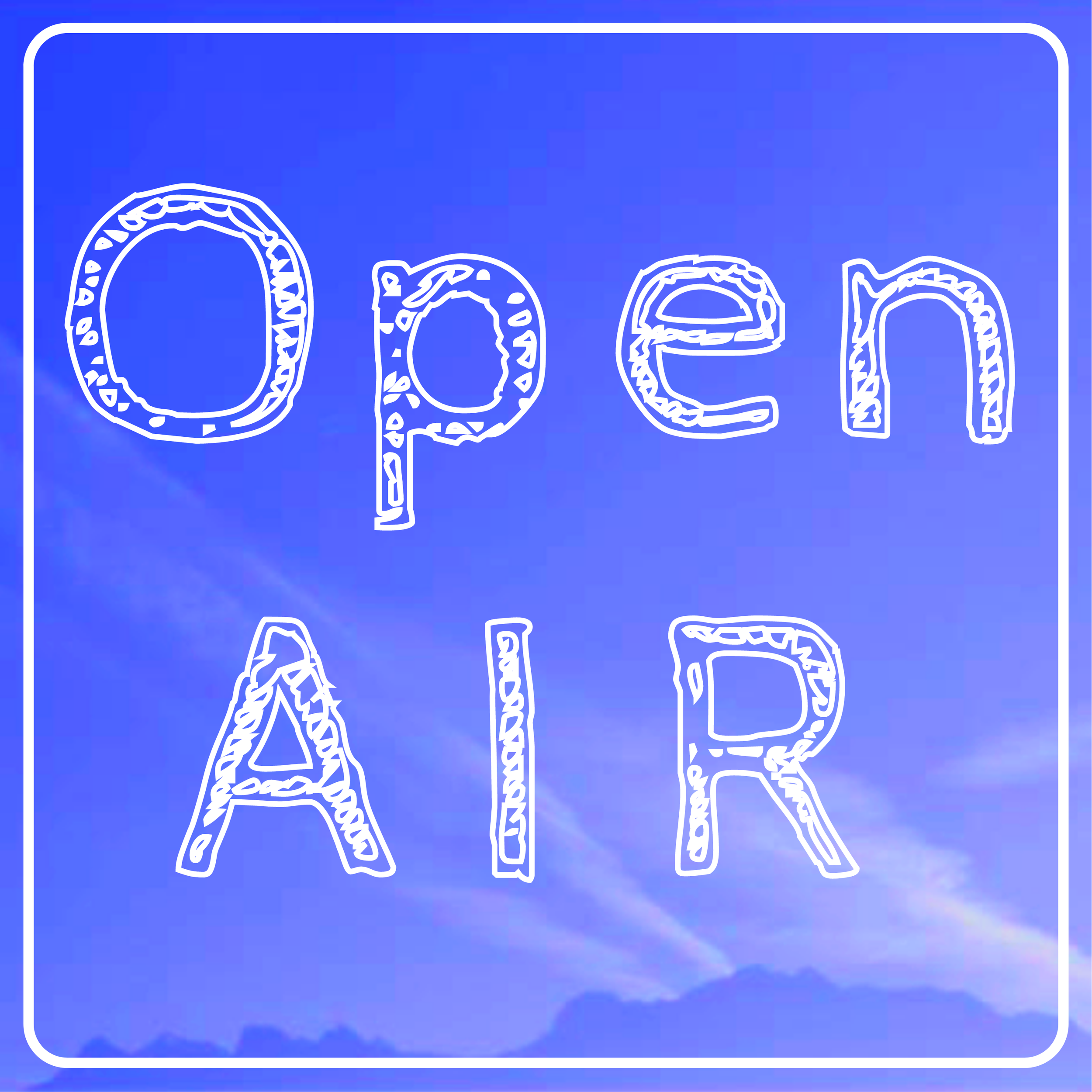Shelby Baldridge: GENERATIVE
“My choices during the making process differ from painting and sculpture, but both mediums involve trial and error, experimentation, and play.”
Summer I 2023 Artist-in-Residence at Garden City Harvest
Shelby Baldridge
How was your experience as an Open AIR Artist-in-Residence?
My experience as an Artist in Residence with Open Air was both generative and healing. I reconnected to my sculpture practice for the first time since landing back in Missoula a year and a half ago. My workspace with Garden City Harvest was in the loft above the barn at the River Road Farm, and I immediately felt inspired to work three-dimensionally when I viewed the space. It has great vertical height with the twine hanging from ceiling beams for drying onions and garlic and a large door-sized open-air window that looks over the community gardens and farm. The barn loft proved to be an ideal work environment both for the space itself and because of the vibrant surroundings of a growing and operational farm.
I also found the span of time dedicated to the residency useful for creating a focused, immersive experience. I was able to spend most days over the five weeks at my barn studio, and I also found it very helpful to be a part of a cohort of other artists working during the same time in nearby locations. Knowing that BT, Michelle, and Justine were working on their projects in spaces just down the road kept me motivated to prioritize my time in the studio.
Last but not least, I loved having a weekly check-in meeting with Stoney, Kelli, and my cohort. This provided a helpful and enjoyable way to track progress and share ideas throughout the residency experience. It was a great balance of self-motivated studio time combined with some accountability and deadlines and cross-pollination. All of these factors formulated a perfect recipe for following through with a work of art for me.
Here is a photo of the sculpture I made during the residency in the barn loft:
Shelby Baldridge, Farmer’s Friend, Mixed Media, June 2023
What was your research process during this time?
I have a history with Garden City Harvest and their mission to provide local, organic produce to the community. This mission resonates with me on a deep level/ I highly value the impact and importance of the local food movement and strive to find and support local farms wherever I have lived as an adult. In an effort to refresh on this topic, I read Barbara Kingsolver’s book Animal Vegetable Miracle in the weeks leading up to the residency and also brushed up on my knowledge of using food as medicine in the tradition of herbalism and naturopathic healing. The connection between the body, earth, and food we consume was a central inspiration for the sculpture I created as a resident. I sourced the idea from my own personal struggles with digestive issues ever since dealing with a parasite over ten years ago. Beets and beetroot extracts have been a part of my healing process, as well as artichoke extracts for motility and gall bladder health. As I was reflecting on the value of quality food in my healing journey, I had an idea for a sculpture of vegetables and herbs corresponding to the 7 chakras of the human body. This was the jumping-off point for the piece I created as a resident, but the idea did evolve during the weeks I spent volunteering and interacting with the farmers.
Greg Price is the head farmer at River Road, and he is a wealth of knowledge about many topics pertaining to farming and ecology: our local watershed, methods of natural pest control and crop rotation, timing for planting each species, and troubleshooting for climate change conditions. Listening to him while helping out a couple of mornings each week kept the research ongoing throughout my time as a resident artist. Listening to him one morning while we planted squash starts directly catalyzed an idea for an addition to my sculpture. Greg explained the purpose of cotyledon leaves, the two first leaves that sprout from a seed. He said they are essentially the embryo for the plant but aren’t necessarily a part of the plant after it begins to grow more leaves and stems. This felt like a perfect correspondence to the 2nd chakra of the body, which is based in the lower abdomen, where our reproductive organs reside. I was able to make a trip to Home ReSource that day and found an aluminum fan blade that was easily malleable by hand… this became the cotyledon leaves in my piece!
Pictured below:
What are you up to now (post Open AIR)?
I currently teach two sections of a course called Visual Language/Drawing Foundations at the University of Montana. Teaching is a new role for me, so I am still in the process of learning new methods and reflecting on what works best; I find it both challenging and rewarding! Teaching charcoal drawing has been helpful in revisiting rendering and gestural studies in my own practice as well. Even when creating 3D works, I tend to start with a sketch of my idea.
Outside of my time on campus, I’ve had a big year in my personal life and am still settling into a new home (or new to us). My partner and I have two quickly growing kittens and a lot of projects we’re chipping away at home, one of which is getting my home studio space set up. I have also continued to try to source local food whenever possible and channel creativity in the kitchen when I have time!
Walk us through the choices you make in a single piece.
My choices during the making process differ from painting and sculpture, but both mediums involve trial and error, experimentation, and play. When working three-dimensionally, I tend to begin either with an idea and reference image or a material I encounter that will spark the idea. When I say material, I mean any inanimate object or organic/natural specimen. I have always been curious about nonhuman things: their form, texture, color, etc. In my painting practice, I tend to focus in on a particular subject for a while, and one of the subjects/muses was sea anemones. When I shifted to working in sculpture, I became attracted to materials that appeared tentacle-like or had that sort of texture. Bathmat material or dusters caught my eye, and I began playing with the material.
In this instance, I searched for materials to best fit my goal of creating a sea anemone. I wanted something squishy or jelly-like for the body of the anemone, and I thought of using resin. I lacked good ventilation in my studio at the time, so a mentor suggested I experiment with gelatin molds as a material instead. This departure into a material I could easily create in my home kitchen became very generative and led me to create my first larger series of multiples in sculpture, a group of gelatin anemones that later became a mobile art project during the pandemic. My initial installation with these small soft sculptures didn’t quite hit the mark; something just didn’t work about it. I kept the anemones and played around with them in different iterations until landing on much more effective ideas for installation in my thesis exhibition titled ‘Integrated Existence’ in 2020 when I placed them on a textural rug and created a sort of environment for them:
This idea evolved in response to lockdown when I was forced to work with things I could bring to my apartment from my studio. Eventually, I started taking the anemones with me out into natural environments and photographing them. At first, it was short neighborhood walks, placing them in flower beds or hollowed trees, then gradually, my adventures grew further from home, leading to a series I like to call “Wild ‘Nems.” I brought the gelatin anemones home to Montana and photographed them on the beach at Flathead Lake and also on the Oregon Coast, where they are in the most literal environmental iteration:
Wild Nems’ series at Flathead Lake
Wild ‘Nems series at Lincoln City, OR
In conclusion, the steps I take in a single piece are unique for each sculpture I make, but I try to trust the process!
Tell us about your most recent solo exhibition.
I had the opportunity to display my work for a First Friday opening at Lovechild Gallery this past July (2023). The timing fell directly on the heels of the Open AIR residency, so it was a race to brush up older sculptures and complete a few new ones for an immersive environment installation that I titled ‘Foraged Forest.’ The show was a wonderful opportunity to connect to a broader art community in Missoula and showcase the large-scale sculptures that I made during my MFA program or while living in Portland, OR, after graduating. Because of the pandemic, many of these human-sized sculptures had been in storage and not seen by many people. I am so grateful I was able to get them together in a space and invite people into this whimsical microenvironment that the pieces created when existing in close proximity to each other in a basement space. Here is a photo of that show:
Foraged Forest, Lovechild Gallery, July ‘23
Tell us about your artistic background
I developed an early interest and joy for making art. Once I discovered painting on canvas, it became a frequent activity, even in my bedroom as a kid around 8-10 years old. I grew up in Whitefish, Montana, where I had ample access to the outdoors and public forest service land to explore. This ability to explore cultivated an interest in natural sciences like biology, and my interest in drawing and painting eventually integrated with my interest in science. I moved to Missoula for college in 2007 and was most interested in fine art, biology, and dance. After declaring an art major, I struggled to find my voice in my work, and taking a course in Botany catalyzed a shift in my painting to portray biological evolution in a playful/ surrealist manner. I gained a lot of momentum once I landed on a conceptual path that culminated in my BFA thesis work.
After graduating from the BFA program at U of M in 2012, I spent five years exploring different job opportunities and areas of the country, always trying to paint in my spare time but seldom finishing work that felt like part of a series. I decided it would be beneficial to return to the academic environment and focus on my work again through an MFA program. I entered the Visual Studies Program at the Pacific Northwest College of Art in the fall of 2018 and was immediately challenged and inspired by the interdisciplinary approach of this program. I brought boxes of collected items into my studio, and my mentor asked about all these materials and items during our first meeting; she encouraged me to consider that they might be art materials rather than just reference items for painting. I started playing with combining things and realized some of my ideas could easily be conveyed with the actual items rather than a representation of them. My first sculptures in the Visual Studies program were these very simple combined objects installed on the wall. I titled them ‘Lollypoppies,’ pictured below. After that, I dove down the rabbit hole of playing with different materials and exploring what their associations could convey through various levels of transformation in the work. My sculpture process is more playful, loose, and abstract than painting. I am still investigating both ways of working and am beginning to try to loosen up with my drawing as I am immersed in the practice of drawing through teaching. The learning curve in the studio never ends, and like any living being, it continuously evolves.
Lollypoppies, 2018. Poppy seed heads and tootsie pop suckers, tape, hardware, shotgun shell.
Check out Shelby’s Instagram @shelby_louise_studio or visit her website HERE!
